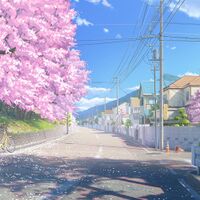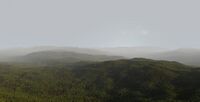Hartridge (Freedonia): Difference between revisions
Jump to navigation
Jump to search
No edit summary |
No edit summary |
||
| Line 144: | Line 144: | ||
}} | }} | ||
'''Hartridge''' also known as '''Hartridge City''' is the largest city and capital of [[Southland (Freedonia)| Southland]]. It is the nation's third largest city. Hartridge is known for its natural beauty, lake shore, mountain, and forest views. Hartridge University is located in the city. Hartridge has a population as of the 2022 census, of | '''Hartridge''' also known as '''Hartridge City''' is the largest city and capital of [[Southland (Freedonia)| Southland]]. It is the nation's third largest city. Hartridge is known for its natural beauty, lake shore, beach shore, mountain, and forest views. Hartridge University is located in the city. Hartridge has a population as of the 2022 census, of 128,000 people living in the Municipality. Only 125,000 people live in the urban area of the Municipality. Hartridge is located on an narrow area between Lake Hannah and the (Hartridge Bay) Toyana Ocean. With the Spring Canal connecting the two bodies of water. | ||
==History== | ==History== | ||
Revision as of 22:17, 28 March 2022
Hartridge | |
|---|---|
City-County/ Regional Capital | |
From Top to bottom: Hartridge CBD (Downtown Hartridge), Bayside Neighborhood, Spring Canal Neighborhood, Spring River Neighborhood during a rainstorm, Highland Lake Recreational Area during the day, Highland Lake Recreational Area during the night, Hartridge Botanical Gardens, Hartridge Central High School, Hartridge University campus, Residential street in the Flowerland Neighborhood, Hartridge Forest Park | |
| Nickname(s): Spring City, Garden City, City by the Lake | |
| Country | Freedonia |
| Region | Southland |
| Founded by | Cornell Hartridge |
| Government | |
| • Mayor | Sophia Swason (GSP) |
| Area | |
| • City-County/ Regional Capital | 342 sq mi (890 km2) |
| • Land | 180 sq mi (500 km2) |
| • Water | 162 sq mi (420 km2) |
| • Urban | 130 sq mi (300 km2) |
| • Rural | 50 sq mi (100 km2) |
| • Metro | 1,700 sq mi (4,000 km2) |
| Elevation | 2,600 ft (800 m) |
| Population (2022) | |
| • City-County/ Regional Capital | 128,000 |
| • Density | 711.12/sq mi (274.56/km2) |
| Population Density based on Total Land Area | |
| Demonym | Hartridgeain |
| Time zone | Freedonia Time |
Hartridge also known as Hartridge City is the largest city and capital of Southland. It is the nation's third largest city. Hartridge is known for its natural beauty, lake shore, beach shore, mountain, and forest views. Hartridge University is located in the city. Hartridge has a population as of the 2022 census, of 128,000 people living in the Municipality. Only 125,000 people live in the urban area of the Municipality. Hartridge is located on an narrow area between Lake Hannah and the (Hartridge Bay) Toyana Ocean. With the Spring Canal connecting the two bodies of water.
History
Geography
Climate
| Climate data for Downtown Hartridge, Southland, Freedonia, 1991–2020 normals, extremes 1944–present | |||||||||||||
|---|---|---|---|---|---|---|---|---|---|---|---|---|---|
| Month | Jan | Feb | Mar | Apr | May | Jun | Jul | Aug | Sep | Oct | Nov | Dec | Year |
| Record high °F (°C) | 104 (40) |
101 (38) |
97 (36) |
93 (34) |
88 (31) |
83 (28) |
79 (26) |
80 (27) |
84 (29) |
86 (30) |
92 (33) |
98 (37) |
104 (40) |
| Average high °F (°C) | 79 (26) |
78 (26) |
75 (24) |
73 (23) |
70 (21) |
67 (19) |
65 (18) |
66 (19) |
68 (20) |
71 (22) |
74 (23) |
77 (25) |
72 (22) |
| Average low °F (°C) | 60 (16) |
57 (14) |
54 (12) |
51 (11) |
48 (9) |
45 (7) |
42 (6) |
44 (7) |
48 (9) |
52 (11) |
56 (13) |
59 (15) |
51 (11) |
| Record low °F (°C) | 48 (9) |
45 (7) |
40 (4) |
37 (3) |
34 (1) |
30 (−1) |
27 (−3) |
28 (−2) |
32 (0) |
35 (2) |
42 (6) |
46 (8) |
27 (−3) |
| Average precipitation inches (mm) | 6.78 (172) |
6.31 (160) |
6.13 (156) |
6.29 (160) |
5.98 (152) |
6.56 (167) |
6.71 (170) |
6.12 (155) |
6.37 (162) |
6.56 (167) |
6.03 (153) |
6.17 (157) |
76.01 (1,931) |
| Average precipitation days (≥ 0.01 in) | 16 | 15 | 14 | 12 | 14 | 15 | 15 | 14 | 13 | 12 | 13 | 15 | 168 |
| Source: Freedonia Weather Service | |||||||||||||
Parks and Gardens
Demographics
| Historical population | ||
|---|---|---|
| Year | Pop. | ±% |
| 1852 | 101 | — |
| 1862 | 152 | +50.5% |
| 1872 | 223 | +46.7% |
| 1882 | 398 | +78.5% |
| 1892 | 656 | +64.8% |
| 1902 | 2,743 | +318.1% |
| 1912 | 6,079 | +121.6% |
| 1922 | 18,978 | +212.2% |
| 1932 | 29,145 | +53.6% |
| 1942 | 36,238 | +24.3% |
| 1952 | 42,445 | +17.1% |
| 1962 | 47,019 | +10.8% |
| 1972 | 58,745 | +24.9% |
| 1982 | 64,568 | +9.9% |
| 1992 | 72,166 | +11.8% |
| 2002 | 82,898 | +14.9% |
| 2012 | 98,766 | +19.1% |
| 2022 | 128,043 | +29.6% |










